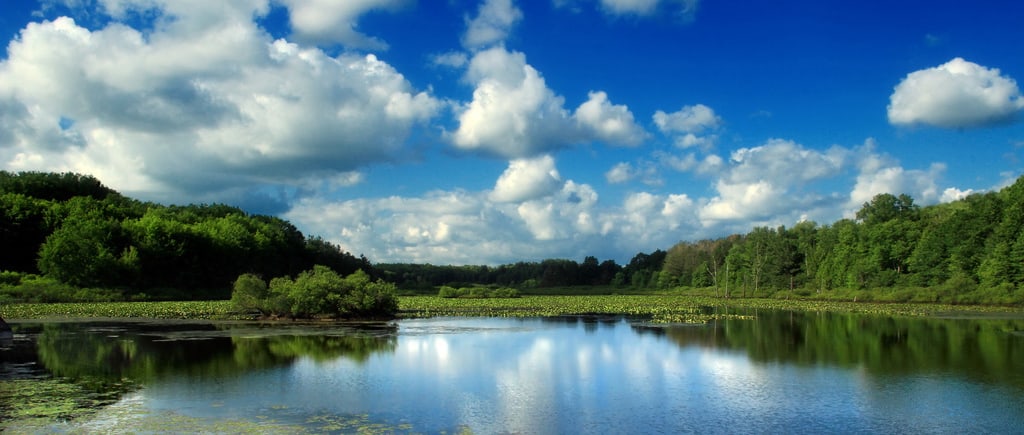Share this article
Land and Water Conservation Fund Expiration Nears
A program vital to the conservation of public lands and waterways is set to expire in less than 50 days.
This program, known as the Land and Water Conservation Fund (LWCF), provides funding for the federal government to acquire lands of high conservation and recreational value. The LWCF also provides assistance for federal, state, and local parkland projects. On the state and local level, this is accomplished through a matching grant program.
This fund relies on a small portion of the royalties the federal government receives from oil and gas companies that drill on the Outer Continental Shelf and has proven to be immensely beneficial.
Since it was signed into law in 1964, nearly three billion dollars from LWCF grants have leveraged more than seven billion dollars in outside matching funds to advance land conservation projects. This has protected over five million acres of land in 98% of U.S. counties and supported more than 41,000 state and local projects. A large amount of this land, over 1.5 million acres, has gone to increasing the size of wildlife refuges.
Without Congressional action this program will expire on September 30.
Current Legislation
In addition to pieces of legislation from earlier this spring that have stalled, two recent bills have been introduced by members of the Senate Energy and Natural Resources (ENR) Committee that include permanent reauthorization of the LWCF at $900 million annually.
The first of these bills is the “The Energy Policy Modernization Act of 2015”. Introduced through a bipartisan effort by Senate ENR Chairwomen Murkowski (R-AK) and Ranking Member Cantwell (D-WA), this broad energy package includes a restructuring of how LWCF funds are allocated.
The current language of the Land and Water Conservation Fund Act guarantees 40 percent of funds for federal agencies to acquire parcels of land. Senator Murkowski has long been against the funds guaranteed to federal land holdings through this law, believing that more money should be given to state and local projects. Due in part to this, her proposed bill to reauthorize the LWCF would also guarantee that state and local projects receive a guaranteed 40 percent of LWCF funds.
The energy package also includes separate provisions such as the creation of the Historic Preservation Fund and the National Park Maintenance and Revitalization Fund, which would work to combat the $11.5 billion National Park Service maintenance backlog. This energy package would allocate an additional $150 million annually to each of these programs from government revenues collected from oil and gas operations.
The creation of the National Park Maintenance and Revitalization Fund was also seen as a compromise to help advance LWCF reauthorization. Many Republicans, including Senator Murkowski, oppose spending more money on land acquisition while there is a maintenance backlog on currently owned federal land.
The second bill, S. 1925, was introduced on August 4 by Senator Heinrich (D-NM) along with twelve Democratic co-sponsors, and provides reauthorization of the LWCF in its current form.
This bill would also temporarily reauthorize the Secure Rural Schools (SRS) program and permanently reauthorize Payment in Lieu of Taxes (PILT) program. SRS provides funding for rural schools located near national forests as well as for projects aimed at forest health. PILT compensates rural communities for tax revenue they are unable to generate from nearby federal lands.
Outlook
S. 1925 is awaiting action in the Senate ENR Committee. The Energy Policy Modernization Act has already passed that hurdle, making it through a vote in that committee on July 30. It is unclear as to whether either bill will act quickly enough as a vehicle to get the LWCF through Congress before it expires.
The Energy Policy Modernization Act will likely not result in a viable path forward for the LWCF. In order for the bill to advance, the proposed funding allocation framework would have to survive the full Senate as well as compromises with the House version of the bill, all before September 30.
Whether it is through the Senate Energy Bill, S. 1925, or a different measure, securing the future of the LWCF is of great importance for the health of U.S. lands and waterways.
The Wildlife Society is a member of the LWCF Coalition and supports reauthorization of this program to enable wildlife professionals to better manage and conserve public-trust wildlife resources.
Additional Resources: Environment & Energy Daily (August 5, 2015) Greenwire (July 30, 2015), Greenwire (July 23, 2015), Senator Heinrich Press Release (August 4, 2015), The Wilderness Society Land and Water Conservation Fund Webpage, Congressional Research Service Publication: Land and Water Conservation Fund: Overview, Funding History, and Issues (October 21, 2014), National Wildlife Refuge Association Land and Water Conservation Fund Webpage
Header Image: Wetland, Erie National Wildlife Refuge, Crawford County
Image Credit: Nicholas A. Tonelli, licensed under cc by 2.0








